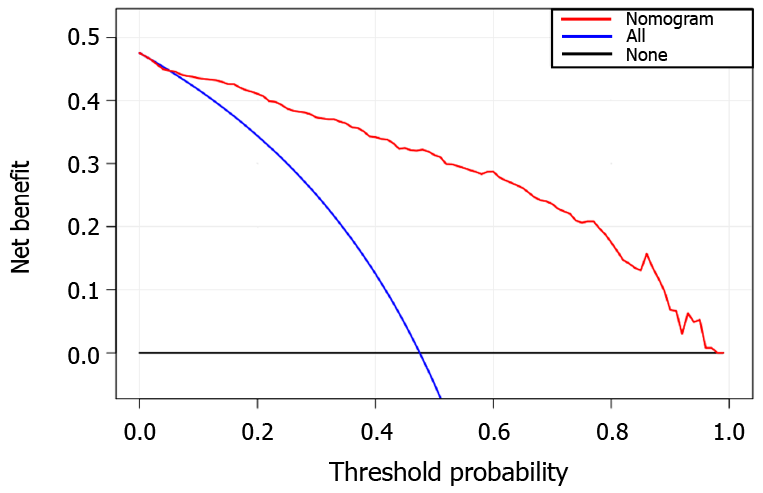Copyright
©The Author(s) 2020.
World J Clin Cases. Nov 6, 2020; 8(21): 5203-5212
Published online Nov 6, 2020. doi: 10.12998/wjcc.v8.i21.5203
Published online Nov 6, 2020. doi: 10.12998/wjcc.v8.i21.5203
Figure 1 Example of dilated masks with various radial dilation distances on a computed tomography image of a lung cancer patient.
Each color ring indicates 2.0 mm width.
Figure 2 Boxplots of the eight radiomics features correlated with pulmonary tuberculosis vs lung cancer.
A: Lbp-2D_firstorder_Entropy; B: Lbp-3D-k_firstorder_10Percentile; C: Log-sigma-3-0-mm-3D_glcm_Idn; D: Log-sigma-5-0-mm-3D_glrlm_RunLengthNonUniformity; E: Squareroot_gldm_DependenceNonUniformity; F: Wavelet-HLH_glcm_Idn; G: Wavelet-HLL_glcm_Idn; H: Wavelet-LLL_glcm_Idmn. TB: Tuberculosis; LC: Lung cancer.
Figure 3 The radiomics nomogram for the differentiation of tuberculosis and lung cancer.
A: The construction of the nomogram model; B, C: The calibration curves of the nomogram model in the training group (B) and validation group (C), respectively; D, E: The receiver operating characteristic curves of the nomogram model in the training group (D) and validation group (E), respectively. CT: Computed tomography.
Figure 4 The decision curve analysis for the constructed radiomics nomogram model.
The X and Y axes represent the threshold probability and net benefit, respectively. The red line indicates the constructed nomogram model. The blue line represents the hypothesis that all patients had lung cancer. The black line represents the assumption that all patients had tuberculosis.
- Citation: Cui EN, Yu T, Shang SJ, Wang XY, Jin YL, Dong Y, Zhao H, Luo YH, Jiang XR. Radiomics model for distinguishing tuberculosis and lung cancer on computed tomography scans. World J Clin Cases 2020; 8(21): 5203-5212
- URL: https://www.wjgnet.com/2307-8960/full/v8/i21/5203.htm
- DOI: https://dx.doi.org/10.12998/wjcc.v8.i21.5203
















